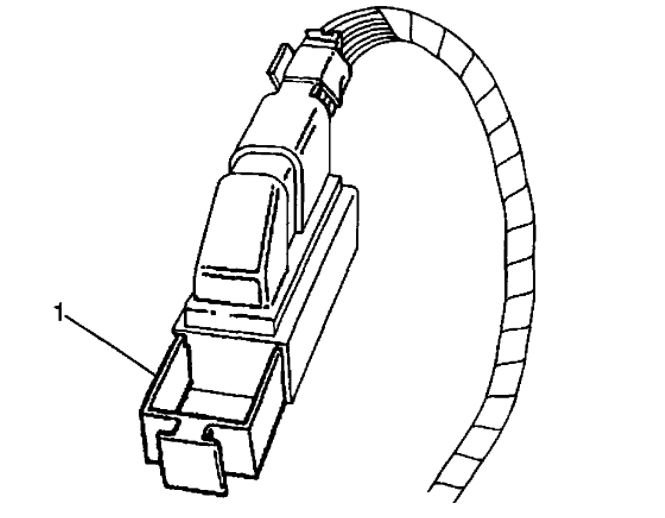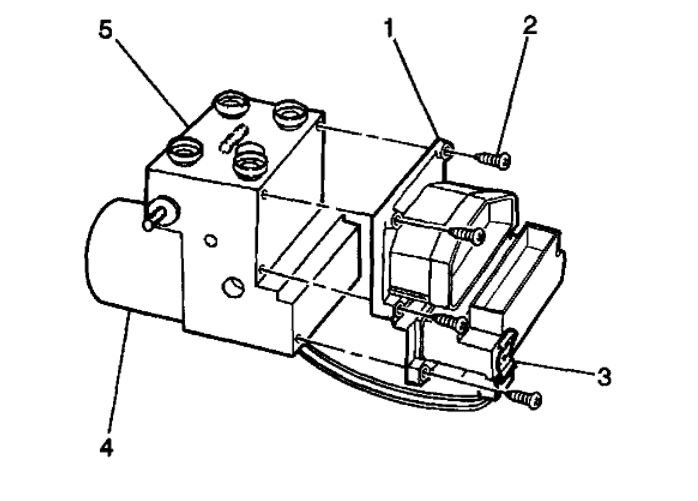Good morning,
Is the ABS light on?
The only thing I can think of is that there is an electrical issue. That is when you cannot clear any codes. With an electrical fault. Codes cannot be cleared. They will remain until they are repaired.
Can you read live data with your scan tool like wheel speed sensors?
I attached the procedure below. Did you follow this procedure?
Roy
ABS Automated Bleed Procedure
Bleeding the ABS System
Caution: Refer to Brake Fluid Irritant in Service Precautions.
See: Brakes and Traction Control > Technician Safety Information > Brake Fluid Irritant Caution
Notice: Refer to Brake Fluid Effects on Paint and Electrical Components in Service Precautions.
See: Brakes and Traction Control > Vehicle Damage Warnings > Brake Fluid Effects on Paint and Electrical Components Notice
Perform a manual or pressure bleeding procedure. Refer to Hydraulic Brake System Bleeding (Manual) or Hydraulic Brake System Bleeding (Pressure) in Hydraulic Brakes. If the desired brake pedal height results are not achieved, perform the automated bleed procedure.
The procedure cycles the system valves and runs the pump in order to purge the air from the secondary circuits normally closed off during normal base brake operation and bleeding. The automated bleed procedure is recommended when air ingestion is suspected in the secondary circuits, or when the BPMV has been replaced.
Automated Bleed Procedure
Notice: The Auto Bleed Procedure may be terminated at any time during the process by pressing the EXIT button. No further Scan Tool prompts pertaining to the Auto Bleed procedure will be given. After exiting the bleed procedure, relieve bleed pressure and disconnect bleed equipment per manufacturers instructions. Failure to properly relieve pressure may result in spilled brake fluid causing damage to components and painted surfaces.
1. Raise the vehicle on a suitable support. Refer to Vehicle Lifting.
2. Remove all four tire and wheel assemblies. Refer to Tire and Wheel Removal and Installation.
3. Inspect the brake system for leaks and visual damage. Refer to Brake Fluid Loss or Symptoms - Hydraulic Brakes. Repair or replace as needed.
4. Inspect the battery state of charge. Refer to Battery Inspection/Test.
5. Install a scan tool.
6. Turn ON the ignition, with the engine OFF.
7. With the scan tool, establish communications with the EBCM. Select Special Functions. Select Automated Bleed from the Special Functions menu.
8. Bleed the base brake system. Refer to Hydraulic Brake System Bleeding (Manual) or Hydraulic Brake System Bleeding (Pressure) in Hydraulic Brakes.
9. Follow the scan tool directions until the desired brake pedal height is achieved.
10. If the bleed procedure is aborted, a malfunction exists. Perform the following steps before resuming the bleed procedure:
- If a DTC is detected, refer to Diagnostic Trouble Code (DTC) List and diagnose the appropriate DTC.
- If the brake pedal feels spongy, perform the conventional brake bleed procedure again. Refer to Hydraulic Brake System Bleeding (Manual) or Hydraulic Brake System Bleeding (Pressure) in Hydraulic Brakes.
11. When the desired pedal height is achieved, press the brake pedal in order to inspect for firmness.
12. Remove the scan tool.
13. Install the tire and wheel assemblies. Refer to Tire and Wheel Removal and Installation.
14. Inspect the brake fluid level. Refer to Master Cylinder Reservoir Filling in Hydraulic Brakes.
15. Road test the vehicle while inspecting that the pedal remains high and firm.
SPONSORED LINKS
Thursday, March 25th, 2021 AT 4:50 AM


